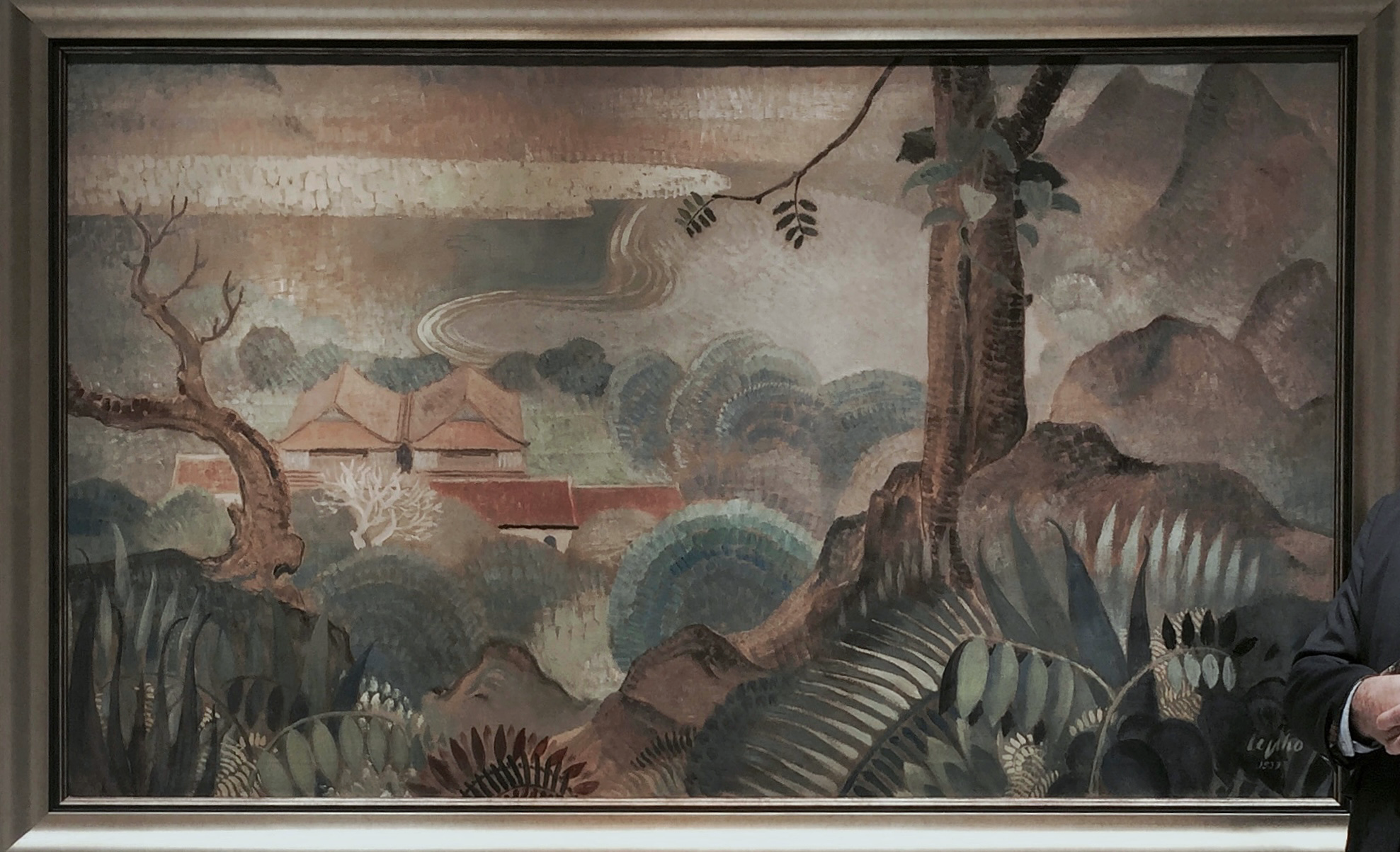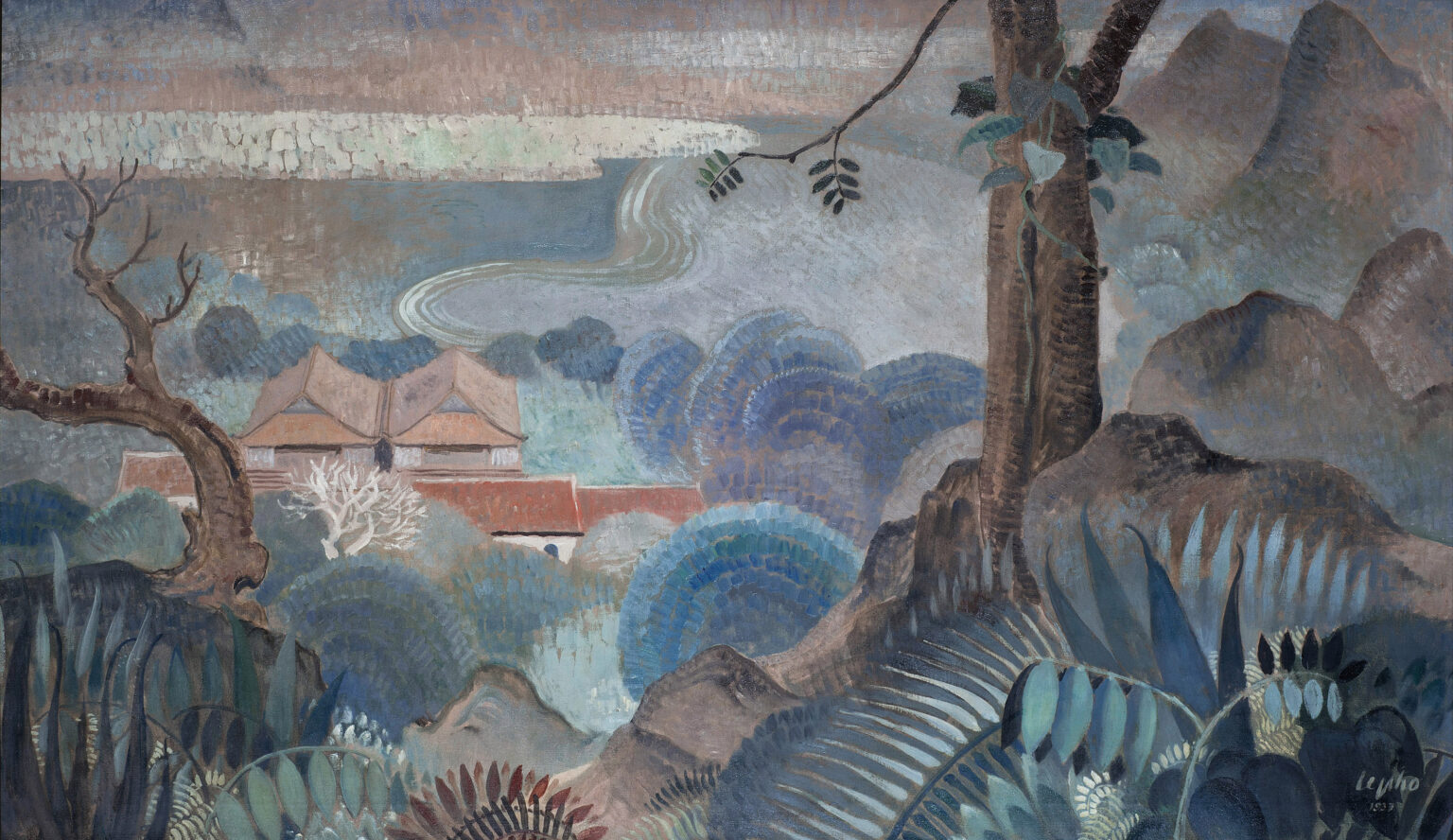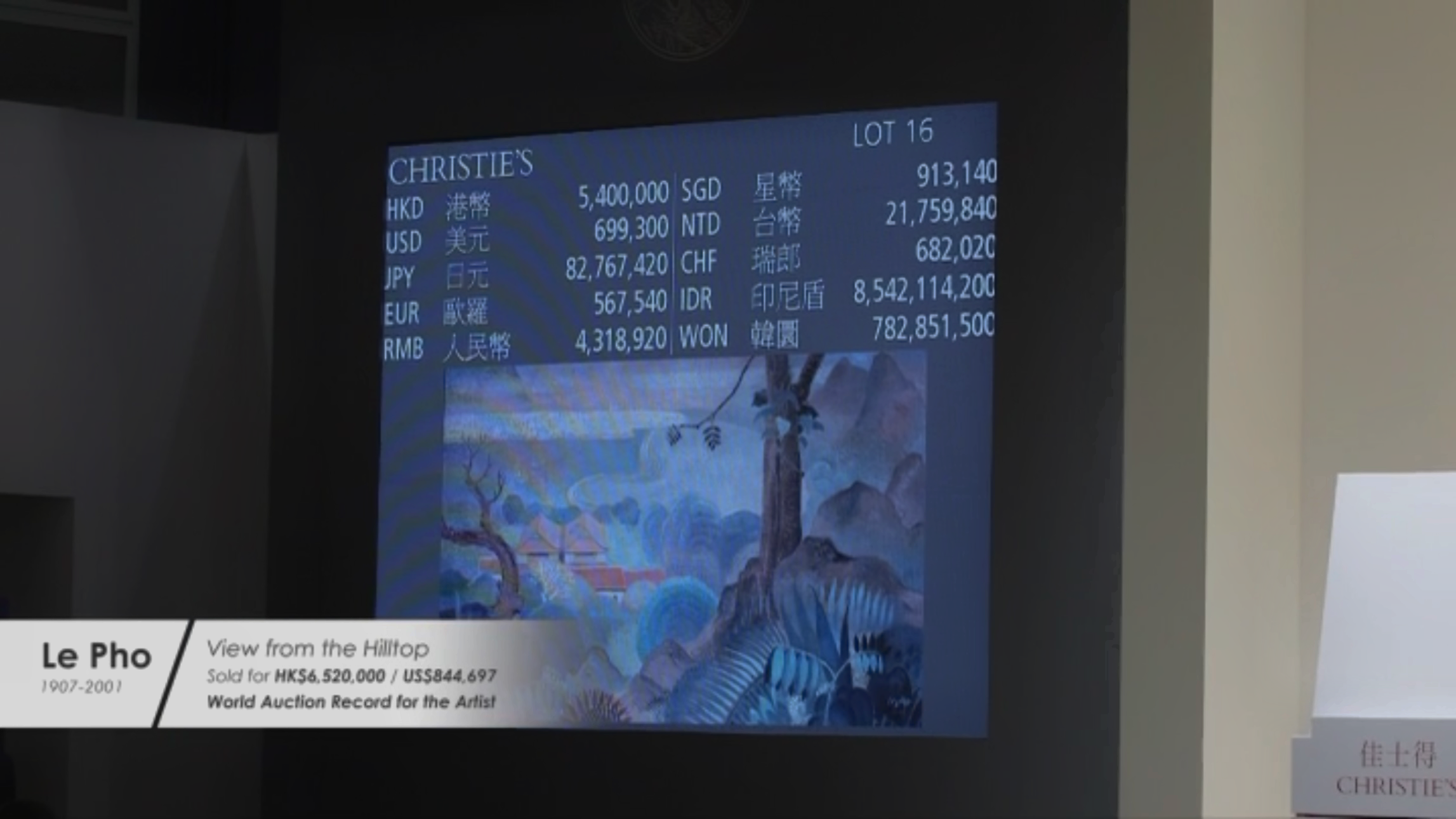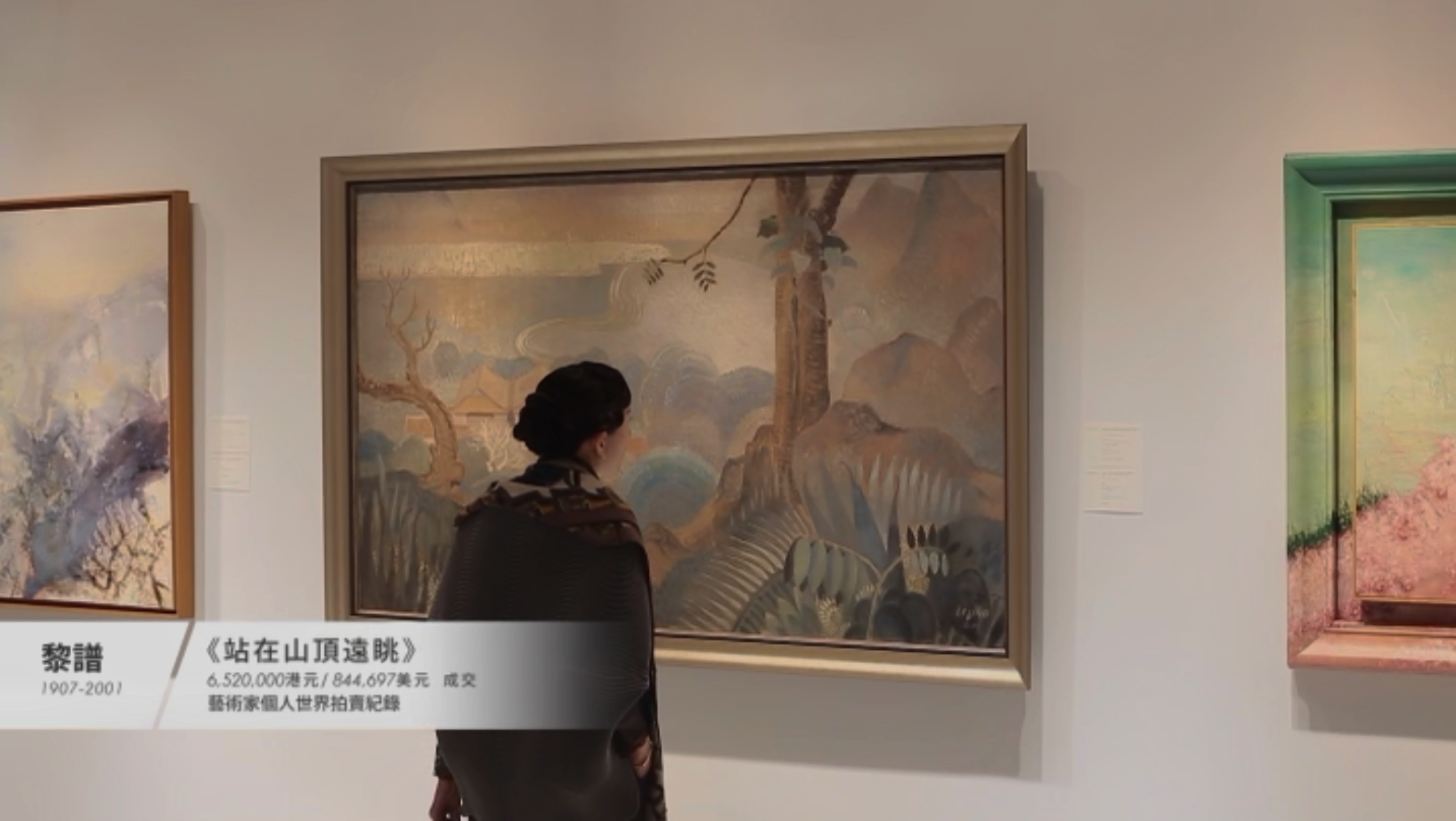

Le Pho's View From The Hilltop fetched HKD 6,520,000, the world record for the artist at Christie's Hong Kong, 22 November 2014.
Le Pho (Vietnam/France, 1907-2001)
View From The Hilltop
signed and dated 'Le Pho 1937' (lower right)
oil on canvas
113 x 192 cm. (50 x 85 in.)
Painted in 1937
Price Realised HKD 6,520,000 at Christie's Hong Kong, 22 November 2014


Le Pho is widely regarded as one of the greatest Vietnamese painters of the 20th century. After returning to Vietnam upon the completion of his studies at the cole des Beaux-Arts in Paris, Le Pho taught and inspired a new generation of painters in Vietnam at the cole Superieure des Beaux-Arts de l'Indochine in Hanoi. A true pioneer of his generation, he eventually chose to leave Vietnam in 1937 to start a new life in Paris. The same year in which View from the Hilltop was painted, this is a work which marks a turning point in Le Pho's life and art, and represents a desire to remember Vietnam as a deeply beautiful and unspoiled landscape.
As a young student, Le Pho's aptitude and talent for the arts and teaching ensured that his aspirations went beyond the realm of academics. Le Pho's core work was based on a search for meaning, and he actively sought this in the various art forms he was exposed to during his time in Paris. The roots of his Vietnamese culture and aesthetics, however, played a key role in the development of his own distinct style. It was the positive, constructive and fruitful confrontation between the West and the East that led to the beauty and excellence of Le Pho's body of work.
It is widely accepted that Le Pho's work can be divided in three styles. His first style - of which this is an exceptional example - can be traced from the time when he used to live in Hanoi to his first years in Paris. His second style, known as the Romanet period after the French gallery owner who became Le Pho's major promoter, spanned the years following the second world war until the 1960s. Finally came his Findlay period during his time spent with the American Wally Findlay gallery who ordered many canvases which were sold to the American market from 1963 onwards. These shifts between mediums and styles across these three periods are a testament to Le Pho's artistic versatility and vision.
Very few oils from the thirties exist, and even less common are works from Le Pho executed on such a grand scale. Some points of comparison are historically significant works such as Le Femme du Mandarin (1931), and L'Age Heureux (1930). An atmosphere of nostalgia permeates these works, and Le Pho tells the story of an old world steeped in historical magnificence. The present work depicts the landscape of the Tonkin region in North Vietnam where Le Pho grew up as a child. The soft pastel colours of his palette and the unique perspective overlooking the vast landscape suggest a grandeur and mystery immortalized by Le Pho's brush.
Unlike many of Le Pho's works, including his more iconic works populated by elegant ladies, in View from the Hilltop, Le Pho presents to us a world conspicuously absent of people. The landscape overwhelms the canvas, and is given a rare eminence as Le Pho honours the landscape of his birth.
The lyrical rendition of the present Lot brings to mind a verse written by fellow Hanoi native, Mrs. de Thanh-Quan, in the 19th century:
The shadow of dusk stretches across the immense sky. In the distance, the sound of a conch replies to the call of a drum and Rustling, the forest of pines welcomes tired birds.
View from the Hilltop also comes from the prestigious collection of Auguste Tholance and was collected for its particularly remarkable theme, mastery of technique, and the impact of its scale.
Jean-François Hubert
Senior Expert, Vietnamese Art










